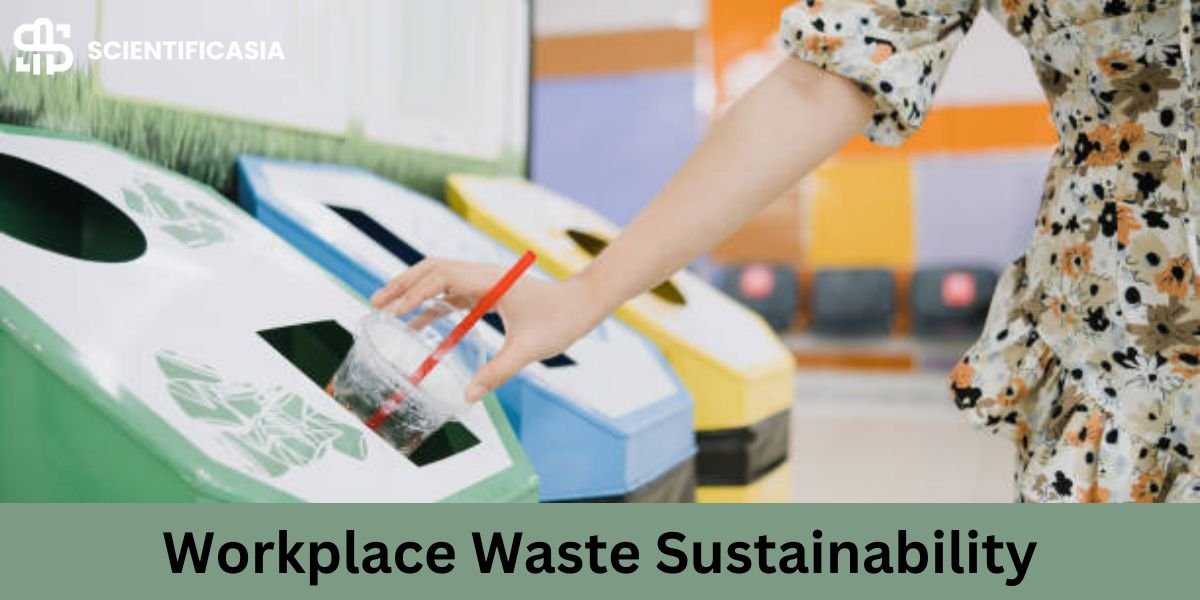Workplaces are improving with time as we shift towards digital means of operations. From modern means of communication to management of daily operations, office work has undergone a significant transformation. Still, in this bustle of daily working, things can overshadow proper office waste management which leads to poor workplace waste sustainability. To perform effective waste control, organizations are implementing measures to comply with global laws of waste and sustainability towards a better future. Talking of workplace waste, over 65.67 million metric tonnes of paper was consumed across the US in 2022 which is a leading factor of major office waste. It is key to control paper and its use to implement workplace waste sustainability. This blog will discuss the important factors that contribute to office waste and cause hurdles in workplace waste sustainability.
What Makes Up Office Waste?

Office waste often goes unnoticed initially, as it doesn’t seem alarming at the start. However, effective commercial waste disposal is essential for maintaining a clean and efficient workplace. But as the waste compiles up it becomes a major issue for organizations to handle as it significantly impacts the office environment. Several factors make up office waste. Some of them are discussed below.
Paper and Forms
Every office has a wide variety of paperwork, from policies to custom printing and employee documentation copies. It is important to have a physical document in this era of digital certification. But keeping them maintained is another thing which many offices fail to do so. This is why paper waste is one of the top forms of office waste that contributes to office waste and reduces the workplace waste sustainability score of the organization. All the outdated reports, printed documents, and reports get compiled into a bulk of office waste. The unnecessary sticky notes, employee diaries, and notebooks are also a part of this paper waste. Despite the major digital shift in workplaces, these piles are still a major cause of workplace waste, which is almost 50% generated in almost all offices.
E-Waste
Another form of waste that is comparatively newer is electronic waste or E-Waste. It is a concern that is becoming a major issue in modern workplaces that have incorporated innovative methods of working. The frequent use of electronic equipment generates a lot of electronic waste which is in the form of batteries, devices, unused laptops, keyboards, mice, and printers. Each of these devices is part of e-waste and contributes to the workplace waste sustainability score in every office setting.
Plastic Waste
Everything we consume in today’s world is made up of plastic. From simple water bottles to packaging materials of each thing, plastic comes as a free addition. Plastic waste is one of the biggest problems to deal with as it is not easily recyclable. The use of plastic items, such as contains, disposable cutlery, office supplies, and equipment can contribute to workplace waste sustainability score. It can lead to many environmental challenges and can become a major hurdle in managing waste effectively.
Food and Human Waste
Humans, themselves can also sometimes contribute to workplace waste sustainability score of the organization. If they manage their daily use items well and maintain a good practice of minimizing waste materials, for instance, after snacking, eating, and playing, they can make up an environmentally friendly office. Food waste is also an alarming concern that needs to be carefully dealt with, as it is also a major issue.
Printing Waste
Inks and toners that come with the printers are also quite sturdy to maintain. The disposed of pages, inks, and toner cartridges contribute heavily to office waste, reducing the office waste sustainability ratings. The cartridges can also become hazardous if they are not properly dealt with at the right time. Recycling these elements is important as it have a negative impact on the environmental and social ecosystem around the office.
How to Control Workplace Waste: A Step Towards Workplace Waste Sustainability

Organizations can follow the leading industrial practices to minimize the waste buildup in the office. There are many ways to make the office a positive workplace that complies with all workplace waste sustainability guidelines. Here are some of the key factors that help offices reduce waste.
Control Environmental Waste
The first step in every strategic waste management is controlling environmental waste which drastically improves environmental sustainability. By controlling environmental waste we mean the implementation of practices such as promoting recycling, composting programs, and decreasing the carbon footprint in the official environment.
Recycling Waste
Waste recycling is the reuse of recyclable office materials that helps remain compliant with waste management regulations. This is a key factor that plays a positive role in workplace waste sustainability scores. It also helps businesses avoid potential fines from the authorities for not recycling reusable waste.
Build a Reduction Plan
Planning is necessary for every business to succeed in the office zone as it helps in monitoring the workplace waste sustainability goals over a period of time. The implementation and tracking of proper practices and employee responsibility are necessary to reduce the waste buildup in the office.
Educate Employees
Organizing sessions on office waste management and workplace waste sustainability goals is crucial to educating the workforce about this alarming issue. The awareness can help them prioritize waste reduction and can increase the business reputation in the market.
Workplace Culture
Fostering a workplace accessibility with policies that help in reducing the waste buildup helps in promoting a healthy workplace culture. Businesses should demonstrate to employees the value of environmental preservation to ensure they adhere to the guidelines of workplace waste sustainability.
Summary
In a nutshell, workplace waste sustainability is an increasingly alarming issue that is more than necessary to manage in today’s ever-evolving landscape. The use of waste control guidelines is necessary to implement while educating the workforce is also crucial. Ultimately, the office should implement policies and recycle waste to reduce the carbon footprint which will not only help in reducing waste but also create a healthy work environment.
Read more:
Benefits of Inclusion in The Workplace
The Art of Faux: Transforming Your Workspace with Artificial Succulents










